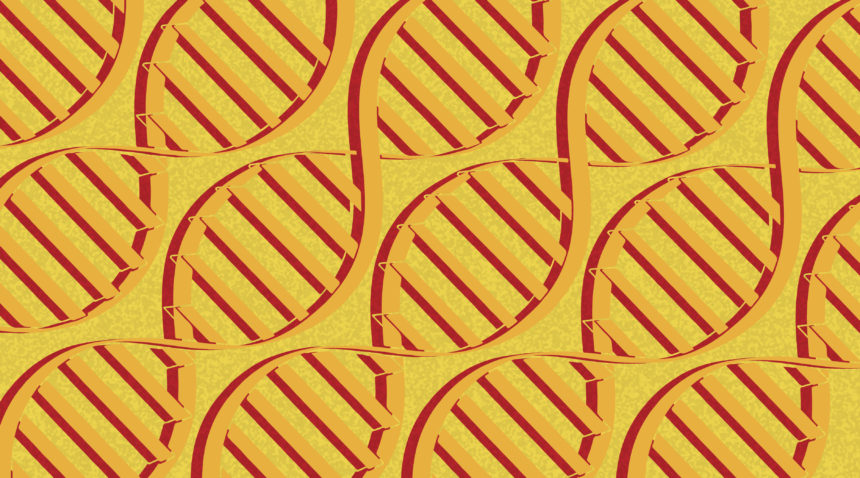Most parents will never hear of mucopolysaccharidoses, better known as MPS, a group of several genetic conditions that are extremely rare. But for the children who are affected, symptoms can start early in life and may go undiagnosed or be misdiagnosed.
Awareness is important, as early treatment is critical to prevent progression of the disease and to prolong the lives of these children.
The Basics of MPS Disorders
MPS disorders are a group of disorders caused by the body’s inability to produce specific enzymes needed to break down large sugar molecules called glycosaminoglycans (GAGs), which are found in bone, cartilage, corneas, connective tissue and skin. This is due to specific gene mutations that are often inherited from parents who are carriers, but in some cases occur at random.
The missing or insufficient enzyme prevents cells from recycling and breaking down GAGs, resulting in these GAGs being stored in cells throughout the body and causing disease. This stored material can cause widespread damage to the heart, bones, joints, respiratory system and central nervous system.
It’s estimated that about 1 of every 25,000 babies born in the United States will have some form of MPS, and the total number of people with MPS nationwide is likely just a few thousand. Joseph Muenzer, MD, PhD, a pediatric geneticist at North Carolina Children’s Hospital who specializes in MPS treatment and research, says there are only about 30 families in North Carolina who have a child with MPS.
When parents first hear the diagnosis, it’s news that “turns their world upside down,” says Kristin L. Clinard, MS, CGC, a certified genetic counselor who works with Dr. Muenzer. That’s because there is no cure for MPS disorders, and they can cause serious health challenges.
Signs and Symptoms of MPS Disorders
Seven types of MPS disorders have been identified: MPS I, II, III, IV, VI, VII, and IX. Although symptoms and severity can vary, children with MPS disorders may experience:
- Intellectual disability (cognitive impairment)
- Developmental delay
- Severe behavioral problems (hyperactivity, aggression, etc.)
- Hearing loss
- Vision problems
- Distinctive facial features including coarse (or thickened) facial features, bulging forehead, flat-bridged nose and large lips or tongue
- Short stature
- Recurring respiratory infections
- Heart disease
- A shortened life span
These symptoms usually are not present at birth but can develop in early childhood and typically worsen as the child gets older.
What are the most common types of MPS?
Though still rare, MPS I, MPS II and MPS III are the most common forms of MPS. These disorders share many similarities.
MPS I can occur in milder forms (known as Hurler-Scheie and Scheie syndrome) or a severe form (known as Hurler syndrome). In the severe form, symptoms such as developmental delay, distinctive facial features, hearing loss and hernias generally show up before the age of 1.
MPS II, better known as Hunter syndrome, occurs primarily in boys and more rarely in girls. Children with MPS II have many of the same physical symptoms as MPS I, but they usually occur later. These symptoms usually start between 2 and 4 years old and progress at a slower rate. MPS II is the only MPS disorder that can be passed from the mother alone.
MPS III, also known as Sanfilippo syndrome, is the most common form of MPS and has significant effects on the brain, like the severe forms of MPS I and MPS II, causing severe neurological symptoms such as progressive cognitive impairment and seizures. Physical symptoms with MPS III are often milder compared to the other MPS disorders.
Treatment for MPS Disorders
Right now, there is no cure for MPS disorders, but treatment is available to help reduce symptoms and improve quality of life.
Enzyme replacement therapy (ERT) is available for most, but not all, MPS disorders. It’s a treatment to replace the deficient or missing enzyme in the body and involves an intravenous infusion of solution containing the enzyme. ERT can help with physical symptoms and improve walking ability but does not improve brain function when a child has intellectual disability.
Dr. Muenzer was principal investigator of a clinical trial that led to FDA approval of the drug idursulfase (branded as Elaprase), an ERT that can slow disease progression for boys with Hunter syndrome.
Another treatment, hematopoietic stem cell transplantation (HSCT), replaces the body’s damaged bone marrow with healthy blood stem cells. This has proven effective for some types of MPS.
Additionally, research is evolving all the time, and potential treatment options for patients continue to improve. One treatment under investigation now injects a high concentration of therapeutic enzymes into the spine, with a goal to target brain disease associated with some forms of MPS.
Another treatment involves gene therapy, via a one-time intravenous injection that introduces a working version of the mutated gene into the cells. The goal is that the cells can then produce the functional enzyme the body was lacking.
In fact, Dr. Muenzer administered an investigational gene-editing therapy to adults with MPS II as part of a clinical trial. “I spent many years working on gene therapy in my UNC research lab, and it is with great pleasure that I am able to finally perform gene therapy on an individual with Hunter syndrome,” Dr. Muenzer said at the time.
Resources for Families Affected by MPS
If you’d like to learn more about MPS disorders, Clinard says the National MPS Society provides a number of helpful resources, such as specific MPS disorder booklets and fact sheets, that she uses in her genetic counseling sessions with families. Many of these are available to download from the society’s website.
If you are concerned about your child’s development and/or notice symptoms that may be worrisome for MPS, please talk to your child’s doctor. A physician’s referral is required for children to be evaluated for MPS at UNC Children’s. To learn more, call (984) 974-1401 or visit the UNC Pediatric Genetics and Metabolism website.

